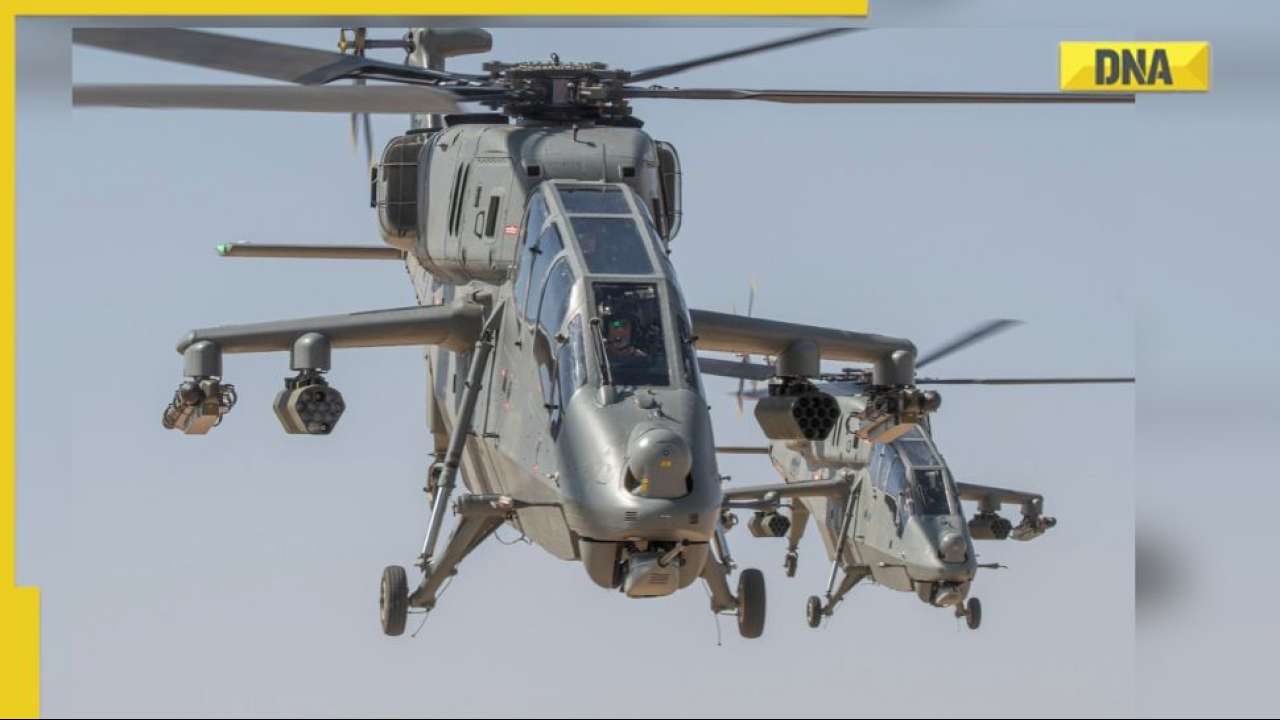
In a move toward 'aatmanirbhar' defence, the Indian Air Force will get its first indigenous light combat helicopter (LCH) today at the Jodhpur Air Base. The helicopter, which can conduct offensive operations in the Siachen Glacier area and eastern Ladakh near the Chinese border, would be phased into the IAF.
The helicopter's first voyage will find it operating in Rajasthan, not far from the Pakistan border.
I would be in Jodhpur, Rajasthan tomorrow, 3rd October, to attend the Induction ceremony of the first indigenously developed Light Comat Helicopters (LCH). The induction of these helicopters will be a big boost to the IAF’s combat prowess. Looking forward to it. pic.twitter.com/L3nTfkJx5A — Rajnath Singh (@rajnathsingh) October 2, 2022
Armament
According to data provided by Army Technology, the maximum takeoff weight for this HAL-made LCH is 5,500 kg. It can carry 2,600 kg worth of stuff.
The helicopter has the radar warning sensor RWS-300, the missile approach warning sensor MAW-300, and the laser warning sensor LWS-310. Its short wings may carry as many as eight anti-tank guided missiles called Helina (Helicopter-launched Nag missiles), four French MBDA Mistral short-range air-to-air missiles, or four rocket pods for 68mm/70mm rockets.
This LCH's automated cannon has a range of 2,000 metres and a rate of fire of 750 rounds per minute. With those kinds of enhancements, it becomes a very dangerous assault helicopter.
The HAL LCH is powered by two HAL/Turbomeca Ardiden 1H1 (Shakti) turboshaft engines. There is a report that it can produce 1,067kW of continuous power at its peak.
Self-defence
As its designer, HAL, claims, the LCH's low frontal radar cross sections give it excellent state-of-the-art stealth capabilities.
The LCH can escape being struck even if an enemy fighter jet or helicopter fixes its missile on it. The effects of gunfire on its body are greatly reduced. The bullet will not even reach the rotors.
It features bulletproof windshields, self-sealing fuel tanks, crew seats that can absorb impact, and crashproof fuel tanks and landing gear.
It has flare and chaff launchers, as well as infrared suppression devices.
The need for HAL LCH
A decision to construct the LCH indigenous assault helicopter by India was made after the Kargil conflict. India at the time wanted an assault chopper that could fly high enough (15,000-16,000 feet) to go into enemy bunkers.
15 years of hard work later, India is set to induct its first indigenous LCH suitable to its high-altitude combat demands after the project was authorised after much debate.
In March of this year, Prime Minister Modi's Cabinet Committee on Security (CCS) approved the purchase of 15 indigenous Light Attack Helicopters (LCH). These helicopters were purchased from HAL for a whopping Rs 3387 crore.
The Indian Air Force will get ten of them, while the Indian Army will receive five.
However, the military will need around 160 LCHs during the next several years.
Eight of the IAF's fifteen helicopters have been completed by HAL, and four of them will be accepted.